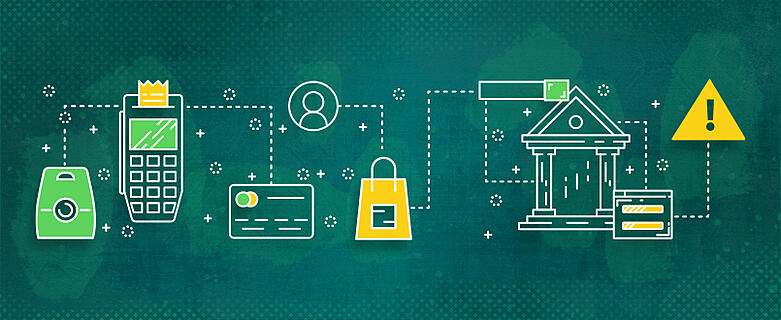News

How To Prevent Friendly Fraud In A Post COVID-19 Economy
The COVID-19 pandemic has forced many brick and mortar stores to switch to business models that incorporate online processing of payment card transactions, hastening an already prominent shift toward e-commerce. As more retailers engage in e-commerce, the spectre of chargebacks grows more threatening. This is not simply (overwrought) posturing: payment solutions giant Ethoca estimates that the value of chargebacks in the United States will increase from $6.1 billion in 2018 to $8.6 billion by 2021.
Whether new entrants to the world of online payment or veterans of e-commerce, all retailers need solutions for managing chargebacks and preventing friendly fraud. This article will explain some of the most up-to-date understandings of the causes and costs of friendly fraud, as well as offering suggestions for how merchants can reduce their susceptibility to it through proactive strategies.
What Are the Costs of Friendly Fraud?
Friendly fraud and chargeback fraud are costly to a merchant, both in terms of the literal monetary expenses and also in terms of damage to the business. This is not mere hyperbole; it can be quantified numerically. Again, Ethoca provides invaluable statistics attesting to the risks of chargeback fraud.
Chargebacks cost merchants in a variety of ways. There is, of course, the lost product and revenue that directly results from the chargeback. Moreover, there are fees associated with a lost chargeback dispute. And there are operational costs for dealing with chargeback requests. Ethoca estimates that 60% of merchants’ chargeback costs are from these operational costs.
As an example of how these chargeback management expenses can add up, consider the costs associated with call center dispute handling. The average length of a chargeback dispute management call in 13 minutes. Merchants generally pay call centers to handle these calls on a per-minute basis, usually at two cents per minute. The total dollar amount of this expense obviously depends on a particular merchant’s volume of chargebacks, but Ethoca estimates that one fifth of merchants’ operational costs of chargeback management comes from these sorts of dispute management services. And these costs are paid regardless of whether or not they resolve the disputes amicably.
Ever since the passage of the Dodd–Frank Wall Street Reform and Consumer Protection Act in 2010, it has been significantly easier for consumers to request chargebacks, essentially putting the burden of (dis)proof on the merchant. According to an Ethoca survey, even issuing banks believe that it is too easy for customers to dispute transactions, with 53% of issuer respondents saying so. Unsurprisingly, 72% of merchants in the same survey also agreed with this sentiment.
Another cost of friendly fraud comes from the long term, accumulated consequences of legitimate sales being marked as fraud. This can affect a merchant’s chargeback ratio, eventually causing potentially major consequences to the business. Too many instances of friendly fraud, chargebacks, and customer frustration can also hurt a merchant’s reputation, causing unquantifiable but real damage.
Overall, Ethoca estimates that transaction disputes cost merchants the equivalent of 2.5 times the value of the transaction being disputed.
What Causes Friendly Fraud?
Some of the most frequent causes of friendly fraud can be roughly grouped together as different forms of confusion. The world of e-commerce exists in the vast, complex fabric of the modern, smart-tech world. While this provides a number of opportunities for sales, it also provides opportunities for confusion and miscommunication.
Consumers often dispute transactions because they do not understand the details of the billing documentation. This includes unclear billing descriptors or lack of transaction detail. Consumers check their billing statements and find transactions that feature descriptors that don’t accurately identify the merchant or don’t provide useful information to explain the transaction. Mistakenly believing this to be a fraudulent charge rather than a legitimate but poorly documented charge, they dispute the transaction.
Another wholly different sort of confusion that results in chargebacks has to do with the expanded technological methods for completing purchases, especially the “internet of things”. Recent years have brought a preponderance of “smart devices” into consumers' homes, allowing people to connect to the internet through a variety of means such as virtual assistants or even the (possibly apocryphal) tweeting refrigerator. These devices can provide valuable new methods for merchants to sell their products and services to consumers, if used responsibly. But they can also lead to chargebacks if the merchants’ smart device payment systems allow for too many accidental purchases.
It is not hard to imagine a circumstance in which a voice-recognizing, AI-powered smart device hears a consumer discussing a product and, if there aren’t proper confirmation processes in place, completes a purchase without the consumer’s intentional permission. This sort of accidental purchase will almost always result in chargeback.
A related issue has to do when purchases are too easily enabled without proper identification guardrails, allowing a member of the cardholder’s household to make a purchase without the cardholder realizing it. The cardholder mistakenly assumes it is a fraudulent purchase and reports it as so. Again, confusion leads to friendly fraud which leads to chargebacks.
How Can Merchants Reduce Instances of Friendly Fraud?
Fraud, friendly or otherwise, can’t be eliminated completely but merchants can protect themselves from their susceptibility to friendly fraud by designing their payment systems in such a way as to preclude the frequent sources of consumer confusion described above. The remedy that is most directly within the merchant’s control is ensuring that their billing descriptors are clear and accurate. Consumers should be able to recognize a business and their purchase based on the billing descriptors that the merchant uses.
Merchants should also try to work with acquiring and issuing banks to provide as many accurate, understandable transaction details to consumers as possible in their billing statements. In the aforementioned Ethoca survey, an astounding 96% of consumers said that they want more detailed transaction information in their banking apps. Obviously, the design of a banking app is not something that merchants can control but it would be in a merchant’s best interest to work with issuers to try to communicate as much information as possible, in as clear a manner as possible with consumers.
Merchants should also make sure that they design their payment systems such that there are guardrails preventing mistaken purchases through smart devices or purchases by other members of the cardholder’s home without the cardholder’s knowledge. While merchants can be forgiven for trying to provide as many avenues as possible for consumers to make purchases, it is not in their best interest to be involved with payment processes that lead to these sorts of mistakes.
The last and perhaps most important technique that merchants can use to alleviate the dangers of friendly fraud is to foster good communication with consumers. In the Ethoca survey, 27% of consumers reported that, when they connected with an institution after being confused about a transaction on a billing statement, they discovered that it was a legitimate transaction. Merchants can and should design their payments system so as to avoid confusion and mistakes but they can never eliminate these sources of friendly fraud entirely. People make mistakes. But if they make their customer service information clearly available and make every effort to communicate each step of a transaction with consumers, they give their customer service representatives more chances to resolve a dispute before it becomes a chargeback.
Further Reading
This article just scratches the surface of how to reduce friendly fraud and design your business practices for better chargeback management. If you’d like to read in more detail about these subjects, please see some of our other articles on the following topics:
-
Affiliate Monitoring - Examining the pros and cons of affiliate marketing and explaining how businesses can monitor those affiliates in order to prevent chargebacks.
-
Subscription Billing - Offering tips for subscription-based businesses to reduce their chargebacks while still reaping the benefits of the subscription model.
-
Detecting Fraud - Showing businesses how to identify and catch instances of fraud before it becomes a chargeback.
-
Customer Service - This is a more in-depth explanation of the aforementioned strategies for reducing chargebacks through better customer service policies and training for customer service reps.









